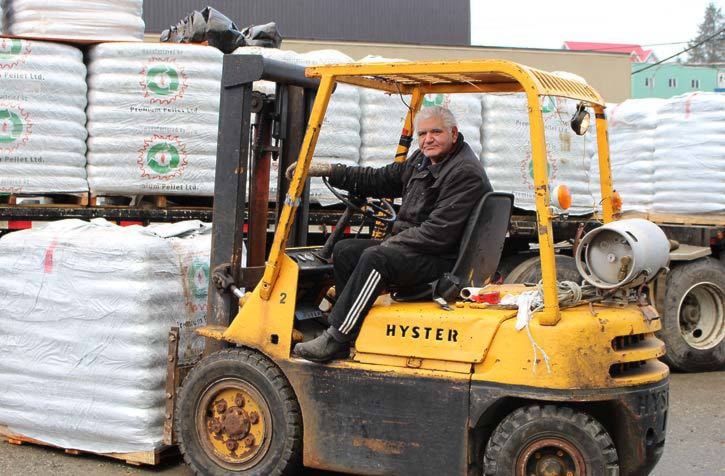They’ve popped up in a couple places within town, but the City of Prince Rupert has not had a formal bylaw regulating them like many other municipalities around B.C.
That is, until now.
Large sea containers are a handy item. Great in a pinch for storage, they are very secure, spacious and cheap.
But aesthetically, as Prince Rupert city planner Zeno Krekic outlined earlier in January, containers can become an unwanted distraction if handled the wrong way.
City staff have known about containers residing in various parts of the municipality beyond heavy industrial areas, but have been waiting for an application, such as Charles Hays Secondary School’s, to address the matter.
The high school wishes to keep a container on their premises for storage of sports equipment and has indicated their intentions as such to City Hall.
After reviewing their application, Krekic and staff devised a proposed bylaw that was not initially passed, but explains that public facilities (P1 designation) and light industrial zones (M1) can be permitted to use shipping containers for storage, like Charles Hays.
The proposed bylaw, Zoning Amendment Bylaw No. 3384, 2015, outlines that containers are permitted in M1 and P1 zones for the purposes of storage and in support of the main business operations. In P1 zones, they must also be painted uniformly the same colour as the principal building beside which they reside.
The City reviewed policy in the District of Chetwynd and the District of Kitimat, both of which don’t allow containers to be used as fencing or screening, can’t be used for advertising and if used as buildings, additions or sheds must be subject to B.C. building codes and permits.
In heavy industrial zones (M3), no special provisions were proposed.
“We need to be mindful by what we’re specifying. My approach is to not overdo it,” said Krekic.
Coun. Wade Niesh brought up concerns regarding spot-zoned light industrial areas within public areas such as the Masonic Hall and what that might mean for nearby residents who don’t want to see containers around. He proposed a bylaw centred around the number of containers per square footage of the property as well as a distance-based bylaw, which was tabled until more information was gathered.
For businesses like V. Amante Home Supplies on Third Avenue, containers are a vital part to the company, as explained by owner Vince Amante, and if you’ve got somewhere to keep containers and you can keep it off the street, you should be allowed to keep it on your property, because the property belongs to the people and they can generate business,” he said.
“So long as the containers don’t stand out or rust out and people take care of the containers, I have no problem with that. Just not on the street or sidewalk ... It encourages business and I think city council understands that and they should come up with a solution that [businesses] can have them on their own property ... For me, if I don’t have a container I might as well shut down, they keep me alive,” Amante said, adding his containers are also painted the same colour as his primary business building.
